Matte cars have transformed from rare automotive curiosities into one of today’s hottest customization trends. We’ve watched as this sophisticated finish has captured the hearts of car enthusiasts worldwide, offering a distinctive alternative to traditional glossy paint jobs that instantly sets vehicles apart from the crowd.
What makes matte finishes so irresistible? They create an understated elegance that’s both modern and timeless. We’re seeing everyone from luxury car owners to everyday drivers embrace this unique aesthetic that delivers serious visual impact without the flashy shine. The flat, non-reflective surface creates depth and character that photographs beautifully and turns heads on every street corner.
Whether you’re considering a full matte wrap or exploring factory matte options, we’ll guide you through everything you need to know about this captivating automotive trend. From maintenance secrets to cost considerations, let’s jump into the industry of matte cars and discover why this finish continues to dominate the customization scene.
What Are Matte Cars and Why They’re Taking Over the Roads
Matte cars feature paint finishes that eliminate reflective shine, creating surfaces that absorb light rather than bouncing it back. We’re witnessing an automotive revolution where these understated vehicles capture attention through their unique visual properties.
The Science Behind Matte Paint Finishes
Matte paint achieves its distinctive appearance through microscopic surface irregularities that scatter light in multiple directions. Manufacturers create these finishes by incorporating flattening agents like silica or aluminum stearate into the paint formula, which prevents light from reflecting uniformly.
Traditional paint formulations rely on smooth surfaces that allow light to bounce back directly to our eyes. Matte finishes instead use particles that create tiny peaks and valleys across the surface. These microscopic textures trap light rays and diffuse them at various angles.
Chemical composition plays a crucial role in matte paint durability. Modern matte formulations include specialized resins that maintain the finish’s integrity while resisting environmental damage. Temperature fluctuations affect these finishes differently than glossy paints because their molecular structure responds uniquely to expansion and contraction.
UV protection becomes more complex with matte surfaces since traditional clear coats would eliminate the desired flat appearance. Manufacturers now incorporate UV stabilizers directly into the base coat to prevent color fading and surface degradation.
How Matte Cars Differ from Traditional Glossy Vehicles
Visual depth separates matte cars from their glossy counterparts in striking ways. Glossy finishes create apparent depth through light reflection, making colors appear more vibrant and dimensional. Matte surfaces absorb light instead, producing colors that appear more saturated and uniform across different viewing angles.
Maintenance requirements differ significantly between these two finish types. Glossy cars benefit from traditional waxes and polishes that enhance their reflective properties. Matte vehicles require specialized cleaning products that won’t add unwanted shine or damage the carefully engineered surface texture.
Scratch visibility varies dramatically between matte and glossy finishes. Minor scratches often become invisible on matte surfaces because they don’t disrupt light reflection patterns. Glossy finishes reveal even tiny imperfections through their mirror-like properties.
Color perception changes based on finish type due to how our eyes process reflected versus absorbed light. Matte black appears deeper and more uniform than glossy black, which can show color variations based on viewing angle and lighting conditions.
Cost considerations extend beyond the initial paint application. Matte finishes typically require more expensive specialized products for maintenance and repairs. Insurance companies may charge higher premiums for matte vehicles due to increased refinishing costs after accidents.
Top Benefits of Choosing Matte Cars Over Glossy Alternatives
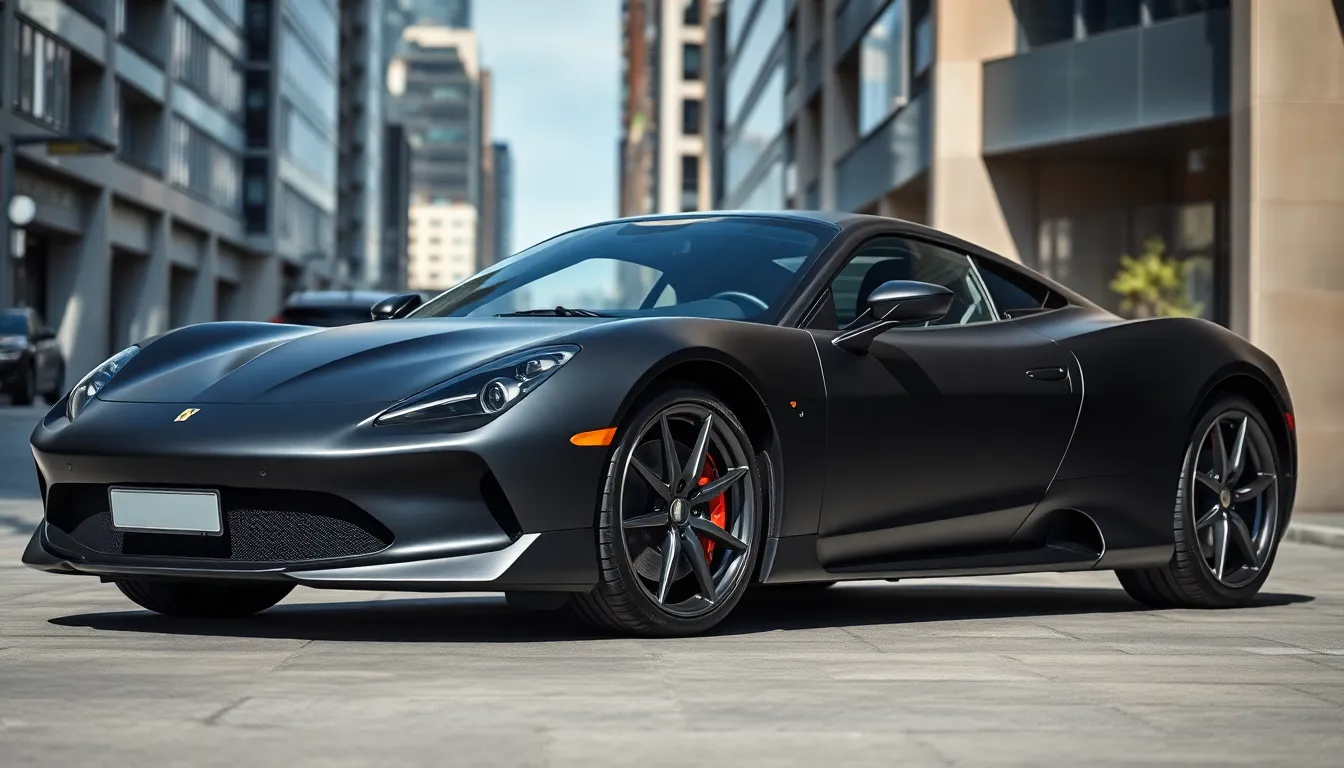
Matte finishes offer compelling advantages beyond their striking visual appeal. We’ll explore the key benefits that make these unique paint jobs increasingly attractive to discerning car owners.
Enhanced Aesthetic Appeal and Modern Look
Sophisticated elegance defines matte finishes, creating an understated luxury that glossy alternatives can’t match. These surfaces deliver a contemporary aesthetic that feels both cutting edge and timelessly refined, making vehicles appear more expensive than their glossy counterparts.
Visual depth becomes more pronounced with matte paint, as the light absorption properties create subtle shadows and contours across body panels. Our eyes perceive these surfaces as having greater dimensionality, improving the natural curves and lines of any vehicle’s design.
Color richness appears more saturated and pure in matte applications, particularly in darker shades like black, gray, and navy blue. The absence of surface reflection allows the true pigment to show through without the interference of environmental reflections that can wash out glossy colors.
Fingerprint resistance makes matte surfaces more practical for daily use, as oils and smudges blend naturally into the texture rather than creating obvious marks. This characteristic proves especially valuable on door handles, trunk areas, and other frequently touched surfaces.
Reduced Glare and Improved Visibility
Sun glare elimination represents one of matte paint’s most practical advantages, as these surfaces absorb rather than reflect intense sunlight. Drivers experience less eye strain and improved comfort during peak daylight hours, particularly when parking in sunny conditions.
Headlight reflection reduction benefits other drivers on the road, as matte surfaces don’t create the harsh reflective spots that glossy paint can produce. This improved light management contributes to overall road safety, especially during nighttime driving conditions.
Photography enhancement occurs naturally with matte finishes, as these surfaces don’t create hotspots or unwanted reflections in automotive photography. Car shows and events become more enjoyable when vehicles don’t blind spectators with reflected light from exhibit lighting.
Weather visibility improves in various conditions, as matte surfaces maintain consistent appearance regardless of lighting angles. Rain, snow, and changing light conditions affect the visual perception of matte cars far less dramatically than their glossy counterparts.
Unique Customization Opportunities
Texture variations expand creative possibilities beyond standard smooth finishes, allowing for satin, semi matte, and ultra flat applications. These different levels of light absorption create distinct visual personalities while maintaining the core matte aesthetic appeal.
Color combinations work exceptionally well with matte bases, as accent colors and graphics appear more vibrant against the non reflective background. Two tone designs, racing stripes, and vinyl wraps achieve greater visual impact on matte surfaces.
Surface treatments become more versatile with matte foundations, accommodating everything from subtle metallic flakes to aggressive textured applications. Custom painters can layer effects that would appear overwhelming or garish on glossy paint jobs.
Reversibility options remain available through vinyl wrap applications, allowing owners to achieve matte looks without permanent paint modifications. This flexibility appeals to lease holders and those who prefer maintaining resale value while enjoying temporary aesthetic transformations.
Popular Matte Car Color Options That Turn Heads
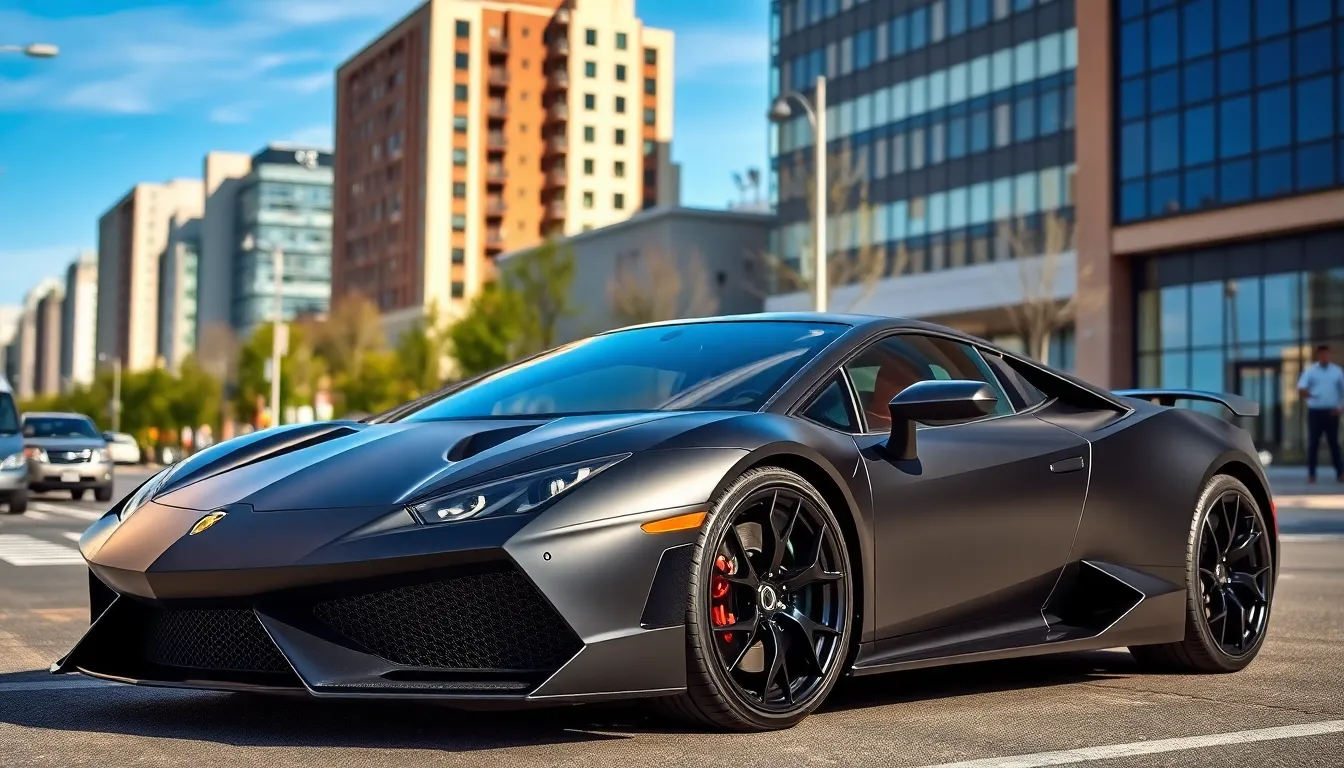
We’ve explored the technical aspects and benefits of matte finishes, and now it’s time to jump into the color choices that make these vehicles truly captivating.
Classic Matte Black: The Ultimate Statement
Matte black remains the most sought after color choice for automotive enthusiasts seeking maximum visual impact. We consistently see this finish dominate luxury car shows and high-end automotive meets because it creates an unmistakable presence on the road.
Performance vehicles benefit tremendously from matte black applications since the finish emphasizes aggressive body lines and aerodynamic features. Supercars like the Lamborghini Aventador and McLaren 720S showcase how this color transforms already striking designs into jaw-dropping masterpieces.
Heat absorption becomes a practical consideration with matte black surfaces as they naturally attract and retain more thermal energy than lighter alternatives. We recommend parking in shaded areas whenever possible and considering ceramic coating protection to manage temperature buildup.
Maintenance requirements for matte black demand exact attention to detail since water spots, fingerprints, and dust particles show more readily on darker surfaces. Regular cleaning with pH-neutral products and microfiber cloths helps preserve the finish’s deep, rich appearance.
Matte White: Clean and Sophisticated
Matte white offers a refined alternative that appeals to drivers wanting elegance without aggression. We notice this color choice particularly popular among luxury sedan owners and those seeking a more understated yet distinctive appearance.
Temperature management becomes significantly easier with matte white finishes as light-colored surfaces naturally reflect heat rather than absorbing it. Your vehicle stays cooler during summer months, reducing stress on air conditioning systems and interior materials.
Dirt and contamination show less prominently on matte white surfaces compared to their black counterparts, making daily maintenance more manageable. We find that weekly washing schedules work well for maintaining the pristine appearance that makes this color so appealing.
Professional photography benefits greatly from matte white vehicles since the finish provides excellent contrast against various backgrounds without creating harsh reflections. Wedding photographers and automotive journalists frequently choose matte white cars for their versatility in different lighting conditions.
Bold Matte Colors: Red, Blue, and Green Options
Matte red creates an aggressive yet sophisticated appearance that works exceptionally well on sports cars and performance-oriented vehicles. We see brands like Ferrari and Porsche offering factory matte red options that enhance their vehicles’ racing heritage and emotional appeal.
Deep matte blue finishes provide a unique balance between professionalism and personality that appeals to drivers wanting something distinctive yet tasteful. BMW’s matte blue offerings demonstrate how this color enhances modern design elements while maintaining corporate elegance.
Matte green options range from subtle forest tones to vibrant lime shades that make powerful statements about the owner’s confidence and style preferences. Military-inspired olive greens create rugged appeal, while brighter variants suit urban environments and younger demographics.
Color saturation appears more intense with matte finishes as the light-absorbing properties enhance pigment depth and richness. We observe that bold matte colors photograph exceptionally well under natural lighting conditions, making them popular choices for social media enthusiasts and car show participants.
| Color Option | Heat Absorption | Maintenance Level | Visual Impact |
|---|---|---|---|
| Matte Black | High | High | Maximum |
| Matte White | Low | Medium | Elegant |
| Matte Red | Medium-High | Medium-High | Bold |
| Matte Blue | Medium | Medium | Sophisticated |
| Matte Green | Medium | Medium | Unique |
Essential Maintenance Tips for Matte Cars
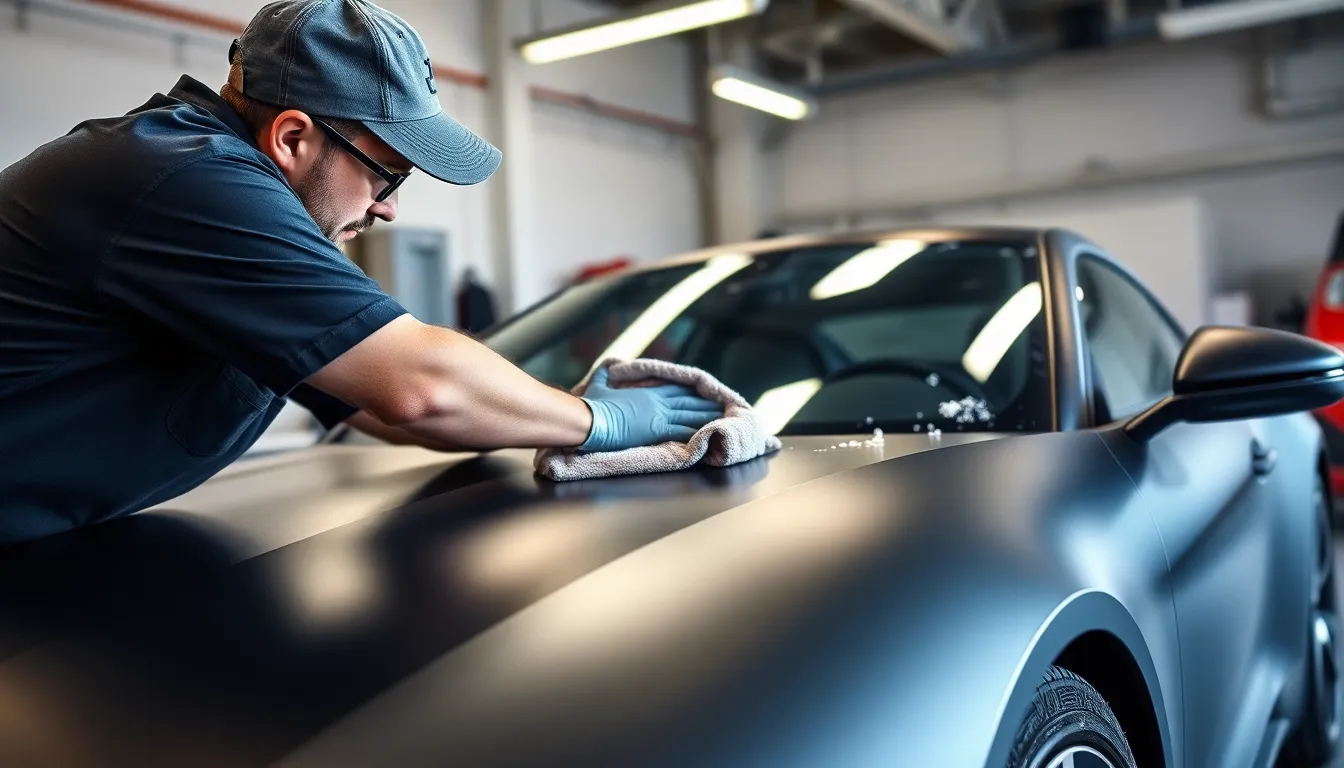
Maintaining your matte finish requires specialized care techniques that differ significantly from traditional glossy paint maintenance. We’ll share proven strategies to keep your matte car looking pristine while avoiding costly damage.
Proper Washing Techniques to Preserve the Finish
Hand washing is the safest method for matte finishes, using only clean microfiber towels and pH-neutral soaps. We recommend washing in straight lines rather than circular motions to prevent creating swirl marks that become visible on matte surfaces.
Temperature control matters significantly during the washing process, with lukewarm water being optimal for loosening dirt without shocking the delicate matte coating. Cold water can leave soap residue while hot water may damage the specialized chemical composition of your matte paint.
Two-bucket washing systems work exceptionally well for matte vehicles, separating your rinse water from clean soap water to minimize dirt contamination. This technique prevents redistributing grime across your car’s surface during the cleaning process.
Drying requires immediate attention after washing, using clean chamois or microfiber towels to prevent water spots from forming on the matte surface. We suggest patting dry rather than dragging towels across the finish to maintain the paint’s unique texture.
Avoiding Common Cleaning Mistakes
Automatic car washes can permanently damage matte finishes through abrasive brushes and harsh chemicals designed for glossy surfaces. These facilities often use rotating brushes that create scratches visible on matte paint’s light-absorbing surface.
Wax and polish products should never touch matte finishes, as they’re formulated to create shine and gloss that contradicts the intended matte appearance. Traditional detailing products can create uneven glossy patches that require expensive professional correction.
Pressure washing demands careful technique, keeping the nozzle at least 12 inches away from the surface and using wide spray patterns instead of concentrated streams. High-pressure water can penetrate the matte coating and cause permanent damage to the underlying paint layers.
Rubbing or aggressive scrubbing destroys the microscopic surface irregularities that create the matte effect, potentially creating shiny spots that stand out against the uniform finish. Light pressure and proper tools prevent irreversible damage to your investment.
Professional Detailing Considerations
Specialized matte detailing services understand the unique requirements of these finishes, using products specifically formulated for non-reflective surfaces. Professional detailers invest in matte-exact cleaners, sealers, and protective coatings unavailable to most consumers.
Ceramic coating applications for matte vehicles require expertise in matte-exact formulations that maintain the original appearance while adding protection. These coatings typically cost 20-30% more than traditional ceramic treatments but provide superior long-term value.
Paint correction on matte finishes demands advanced techniques and specialized equipment, often requiring complete panel refinishing rather than traditional polishing methods. Professional shops experienced with matte work charge premium rates due to the complexity involved.
Regular professional maintenance schedules help identify potential issues before they become costly problems, with most experts recommending quarterly detailed inspections. This proactive approach extends the life of your matte finish while maintaining its distinctive appearance and resale value.
Cost Considerations When Buying Matte Cars
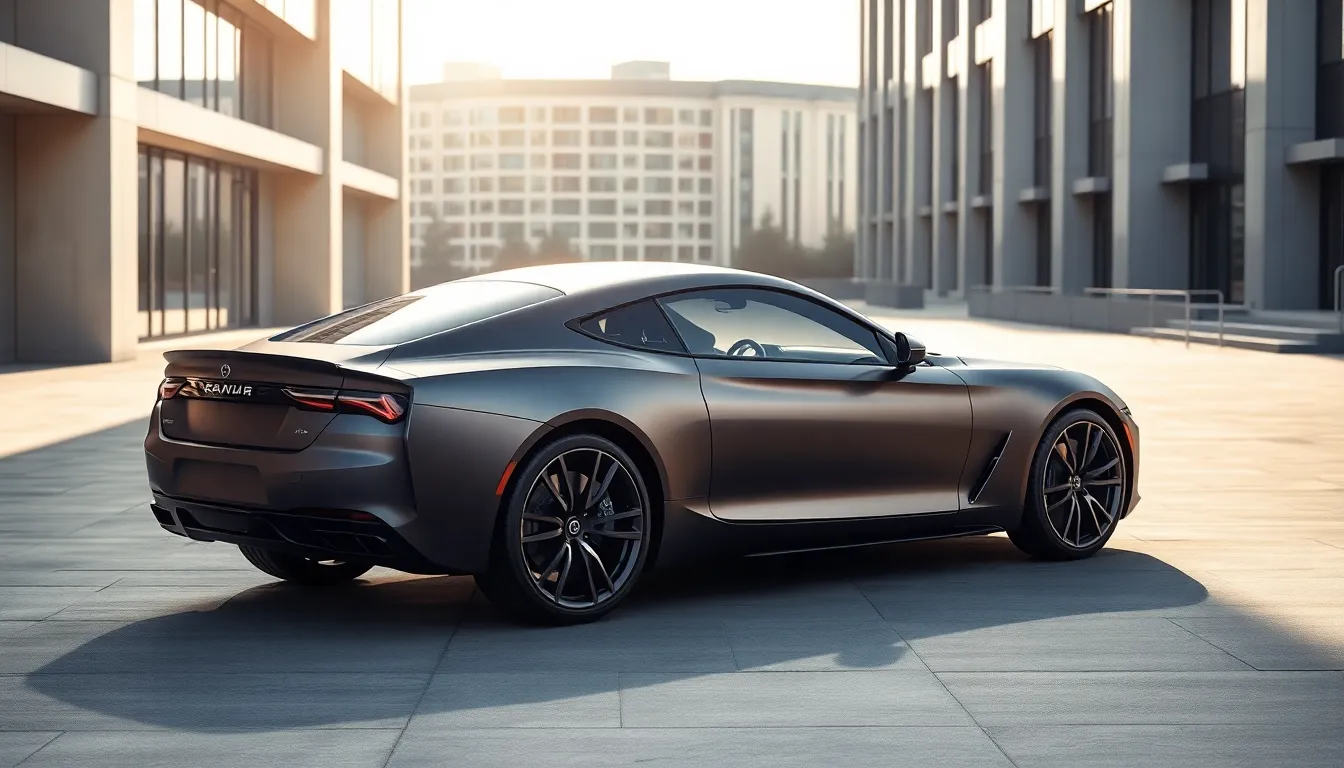
Choosing a matte finish vehicle involves important financial decisions that extend far beyond the initial purchase price. Understanding these cost implications helps you make informed choices about your matte car investment.
Factory Matte Paint vs. Aftermarket Wraps
Factory matte paint options typically add $2,000 to $8,000 to your vehicle’s base price, depending on the manufacturer and model. Premium brands like BMW, Audi, and Mercedes-Benz often charge higher premiums for their factory matte finishes, with some luxury models commanding upwards of $10,000 for specialty matte colors.
Aftermarket vinyl wraps present a more budget-friendly alternative, ranging from $3,000 to $6,000 for professional installation. High-quality 3M or Avery Dennison wraps offer excellent durability and can last 5 to 7 years with proper care. Wraps provide flexibility since you can remove them without damaging the original paint underneath.
Paint protection film (PPF) applications over factory matte paint cost an additional $2,000 to $4,000 but preserve the finish’s integrity. Professional installation ensures proper adhesion and longevity for both wraps and protective films.
Insurance and Resale Value Impacts
Insurance premiums for matte cars often increase by 10% to 20% compared to traditional glossy finishes due to higher repair costs. Specialty paint requires exact body shop expertise and materials, driving up claim expenses for insurers.
Comprehensive coverage becomes crucial since matte finishes are more susceptible to damage from environmental factors. Many insurance companies require detailed documentation and photos of the matte finish before providing coverage.
Resale values for factory matte cars generally hold better than aftermarket modifications, particularly for luxury vehicles. Limited edition matte models from manufacturers like Lamborghini or Ferrari often appreciate in value over time. But, mainstream vehicles with matte finishes may experience slower depreciation curves due to their niche appeal.
Long-term Maintenance Expenses
Specialized cleaning products for matte finishes cost 30% to 50% more than traditional car care items. Matte-exact detailing sprays, soaps, and protective coatings require regular replenishment to maintain the finish properly.
Professional detailing services charge premium rates for matte vehicles, typically $200 to $400 per session compared to $100 to $200 for glossy cars. Quarterly professional maintenance helps preserve the finish and prevents costly restoration needs.
Repair costs escalate significantly when matte surfaces require touch-ups or panel replacements. Body shops specializing in matte finishes charge 2 to 3 times more than standard paint repairs due to the technical expertise required. Touch-up paint matching becomes complex since matte finishes vary in texture and appearance under different lighting conditions.
| Cost Category | Matte Cars | Traditional Cars | Difference |
|---|---|---|---|
| Factory Paint Option | $2,000-$10,000 | Included | +100% |
| Professional Detailing | $200-$400 | $100-$200 | +100% |
| Insurance Premium | 10-20% increase | Standard rates | +15% average |
| Specialty Products | $50-$100/month | $30-$50/month | +67% |
| Repair Costs | 2-3x standard | Standard rates | +200% |
Best Matte Car Models Available Today

We’ve compiled the top matte car models that showcase this distinctive finish across various price points and categories. These vehicles demonstrate how manufacturers are embracing the matte trend to create stunning automotive masterpieces.
Luxury Matte Cars from Premium Brands
BMW M4 Competition leads the luxury matte segment with its factory Frozen Dark Grey metallic finish, available as a $5,950 premium option. The distinctive coating enhances the vehicle’s aggressive M-Sport styling while maintaining the sophisticated elegance expected from the brand. Performance enthusiasts appreciate how the matte finish complements the car’s track-focused design language.
Mercedes-AMG GT Black Series offers Magno Night Black as its signature matte option, creating one of the most striking supercars on the market. This $8,000 factory upgrade transforms the already dramatic silhouette into an intimidating presence that commands attention. We’ve observed how this finish particularly enhances the vehicle’s aerodynamic elements and muscular proportions.
Lamborghini Huracán provides multiple matte color options including Grigio Titans and Nero Nemesis, each adding approximately $7,200 to the base price. These finishes accentuate the supercar’s sharp angular design while creating depth that traditional glossy paint cannot achieve. The Italian manufacturer has perfected the application process to ensure durability even under extreme driving conditions.
Rolls-Royce Cullinan features bespoke matte finishes through their customization program, with prices starting around $15,000 for premium matte options. Clients can choose from an extensive palette of custom colors that reflect their personal taste while maintaining the brand’s luxury standards. The ultra-luxury SUV’s commanding presence becomes even more distinctive with these exclusive matte treatments.
Affordable Matte Options for Budget-Conscious Buyers
Hyundai Veloster N offers a factory matte grey finish option for approximately $1,200 additional cost, making it one of the most accessible performance cars with genuine matte paint. This hot hatch demonstrates that premium aesthetics don’t require a premium price tag. The finish perfectly complements the vehicle’s sporty character and rally-inspired design elements.
Volkswagen Golf GTI provides select matte color options through their customization program, typically adding $2,500 to the base price. European markets have seen greater availability of these finishes compared to North American offerings. The iconic hot hatch gains a more aggressive appearance that matches its spirited performance capabilities.
Aftermarket vinyl wrap answers present the most budget-friendly path to matte aesthetics, with complete vehicle wraps ranging from $3,000 to $6,000 professionally installed. Popular vehicles for matte wraps include the Honda Civic Si, Ford Mustang, and Subaru WRX. These applications allow owners to achieve the matte look while preserving the original paint underneath for future resale value.
Jeep Wrangler enthusiasts frequently choose matte black vinyl wraps to enhance the SUV’s rugged character, with costs typically under $4,000 for quality installation. The textured finish aligns perfectly with off-road aesthetics while providing protection against trail damage. We’ve seen increasing popularity of this combination among outdoor adventure enthusiasts.
Electric Vehicles with Matte Finishes
Tesla Model S Plaid doesn’t offer factory matte options, but aftermarket wraps in matte grey and black have become extremely popular among owners. Professional installations cost between $4,000 and $7,000 depending on color complexity and finish quality. The sleek silhouette of the Model S becomes even more futuristic with matte treatments that complement its advanced technology.
Porsche Taycan provides Frozen Berry metallic and other matte options through Porsche Exclusive Manufaktur, adding approximately $6,200 to the vehicle’s price. These finishes enhance the electric sports car’s modern design language while maintaining Porsche’s commitment to premium aesthetics. The matte colors particularly highlight the Taycan’s distinctive light bar and sculpted bodywork.
Lucid Air Dream Edition offers several matte color choices including Stellar White and Cosmos Silver, each adding around $4,500 to the luxury sedan’s base price. These finishes emphasize the vehicle’s sophisticated proportions and premium materials throughout the cabin. The electric luxury sedan’s dramatic styling becomes even more compelling with these exclusive paint options.
BMW iX xDrive50 features Mineral Grey metallic matte as part of BMW’s Individual program, priced at approximately $5,200 additional cost. This electric SUV’s bold design philosophy aligns perfectly with the modern aesthetic of matte finishes. We’ve noticed how the finish particularly enhances the vehicle’s distinctive kidney grille design and flush door handles.
Potential Drawbacks of Owning Matte Cars
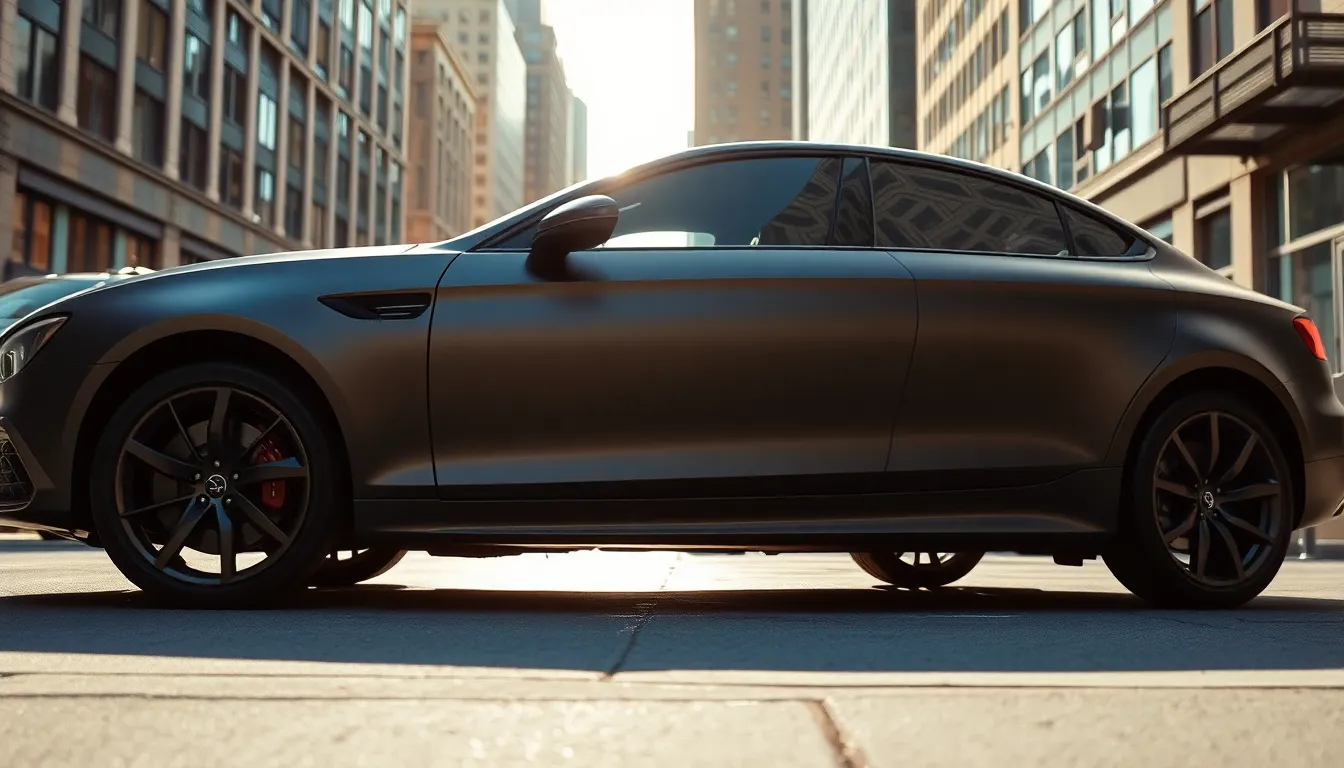
While matte finishes offer stunning visual appeal and unique customization opportunities, they come with several challenges that potential owners should carefully consider. These drawbacks can significantly impact both daily ownership experience and long-term vehicle maintenance costs.
Difficulty in Touch-up Repairs
Touch-up repairs on matte cars present important challenges that don’t exist with glossy finishes. Traditional paint repair methods like wet sanding and polishing can’t be used on matte surfaces because they alter the texture and create glossy spots. Small scratches that would be easily buffed out on glossy paint require complete panel repainting on matte vehicles.
Professional repair shops often struggle to match the exact texture and finish of matte paint. The specialized techniques required for matte repairs mean that even minor stone chips or parking lot scratches can result in expensive panel replacements. We’ve seen repair costs range from $800 to $2,500 for small sections that would cost under $300 to fix on traditional paint.
Spot repairs create noticeable inconsistencies in matte finishes that are difficult to blend. Unlike glossy paint where repairs can be feathered and polished to match surrounding areas, matte surfaces show distinct boundaries between repaired and original sections. This limitation often forces owners to repaint entire panels for seamless results.
Limited Color-matching Options
Color matching presents unique obstacles for matte car owners that extend beyond standard paint matching procedures. The texture variation in matte finishes means that even perfectly matched paint colors can appear different due to light absorption differences. Factors like spray gun settings, application temperature, and surface preparation significantly affect the final appearance.
Aftermarket touch-up products rarely provide satisfactory results for matte finishes. Most automotive paint manufacturers offer limited matte color options compared to their extensive glossy paint catalogs. We’ve found that specialized matte paint suppliers often require custom mixing for exact matches, increasing both cost and wait times.
Age-related color changes occur differently in matte paints compared to glossy alternatives. UV exposure and environmental factors cause matte finishes to fade unevenly, making it nearly impossible to match older sections with fresh paint. Insurance companies sometimes classify entire vehicles as total losses when matte paint damage extends across multiple panels due to matching difficulties.
Higher Susceptibility to Damage
Matte surfaces show damage more readily than glossy finishes due to their unique light-absorbing properties. Fingerprints, water spots, and minor abrasions that would be barely visible on glossy paint become prominent on matte surfaces. The textured nature of matte finishes traps contaminants more easily, leading to permanent staining from substances like tree sap, bird droppings, and road tar.
Chemical sensitivity makes matte cars vulnerable to common automotive products and environmental hazards. Standard car care products containing silicones, polymers, or abrasives can permanently damage matte finishes by creating glossy patches or texture changes. We’ve documented cases where improper cleaning products have required complete repainting of affected panels.
Physical damage appears more severe on matte cars than on traditional painted vehicles. Swirl marks from improper washing techniques, key scratches, and even light scuffs create permanent visual damage that can’t be corrected through polishing. The inability to use protective waxes or sealants leaves matte surfaces more exposed to environmental damage from UV rays, acid rain, and industrial fallout.
Conclusion
Matte cars represent a bold statement in automotive aesthetics that’s here to stay. We’ve seen how these distinctive finishes offer unparalleled visual appeal while requiring dedicated care and investment from their owners.
The decision to go matte eventually depends on your priorities and budget. If you’re drawn to the sophisticated elegance and unique customization opportunities these finishes provide you’ll need to embrace specialized maintenance routines and higher ownership costs.
Whether you choose factory matte paint or aftermarket vinyl wrapping we recommend working with experienced professionals who understand the nuances of matte finishes. Your investment in proper care and maintenance will ensure your matte vehicle continues turning heads for years to come.
Frequently Asked Questions
What are matte cars and how are they different from regular cars?
Matte cars feature paint finishes that absorb light rather than reflect it, creating a flat, non-glossy appearance. Unlike traditional glossy vehicles, matte finishes have microscopic surface irregularities and specialized chemical compositions that eliminate shine. They offer reduced glare, enhanced color saturation, and a sophisticated, modern aesthetic that sets them apart from conventional reflective paint jobs.
How much does it cost to get a matte finish on a car?
Factory matte paint options typically add $2,000 to $10,000 to a vehicle’s base price. Aftermarket vinyl wraps are more budget-friendly, costing $3,000 to $6,000. Additional costs include 10-20% higher insurance premiums, specialized maintenance products, and professional detailing services that are significantly more expensive than regular car care.
Are matte cars harder to maintain than regular cars?
Yes, matte cars require specialized maintenance techniques that differ from glossy paint care. They need pH-neutral soaps, hand washing only, and specific drying methods. Automatic car washes, traditional waxes, polishes, and improper pressure washing can damage the matte finish. Professional detailing services using matte-specific products are recommended for optimal maintenance.
What are the most popular matte car colors?
Matte black remains the ultimate statement color, especially popular on luxury and performance vehicles. Matte white offers a clean, sophisticated look that’s easier to maintain and photograph well. Bold colors like matte red, blue, and green provide unique aesthetics, though each has different heat absorption properties and maintenance requirements.
Can you repair scratches on matte paint?
Repairing matte paint is challenging because traditional repair methods cannot be used. Minor scratches often require expensive panel replacements instead of simple touch-ups. Color-matching is difficult, and matte finishes age uniquely, making repairs more complex and costly than glossy paint repairs.
Do matte cars have better resale value?
Resale value depends on whether you have factory matte finish or aftermarket modifications. Factory matte options from luxury brands typically hold their value better, while aftermarket vinyl wraps may not add significant resale value. The specialized maintenance requirements and limited appeal to some buyers can affect overall market demand.
Which car models offer the best factory matte finishes?
Luxury models like the BMW M4 Competition and Mercedes-AMG GT Black Series offer stunning factory matte finishes. More affordable options include the Hyundai Veloster N and Volkswagen Golf GTI. Electric vehicles like the Tesla Model S Plaid and Porsche Taycan also feature impressive matte options.
What are the main disadvantages of owning a matte car?
Key drawbacks include higher maintenance costs, difficulty with repairs, limited color-matching options, and increased susceptibility to damage. Matte surfaces show scratches and environmental damage more readily than glossy finishes. They also require specialized cleaning products and techniques, making them more demanding to maintain properly over time.

